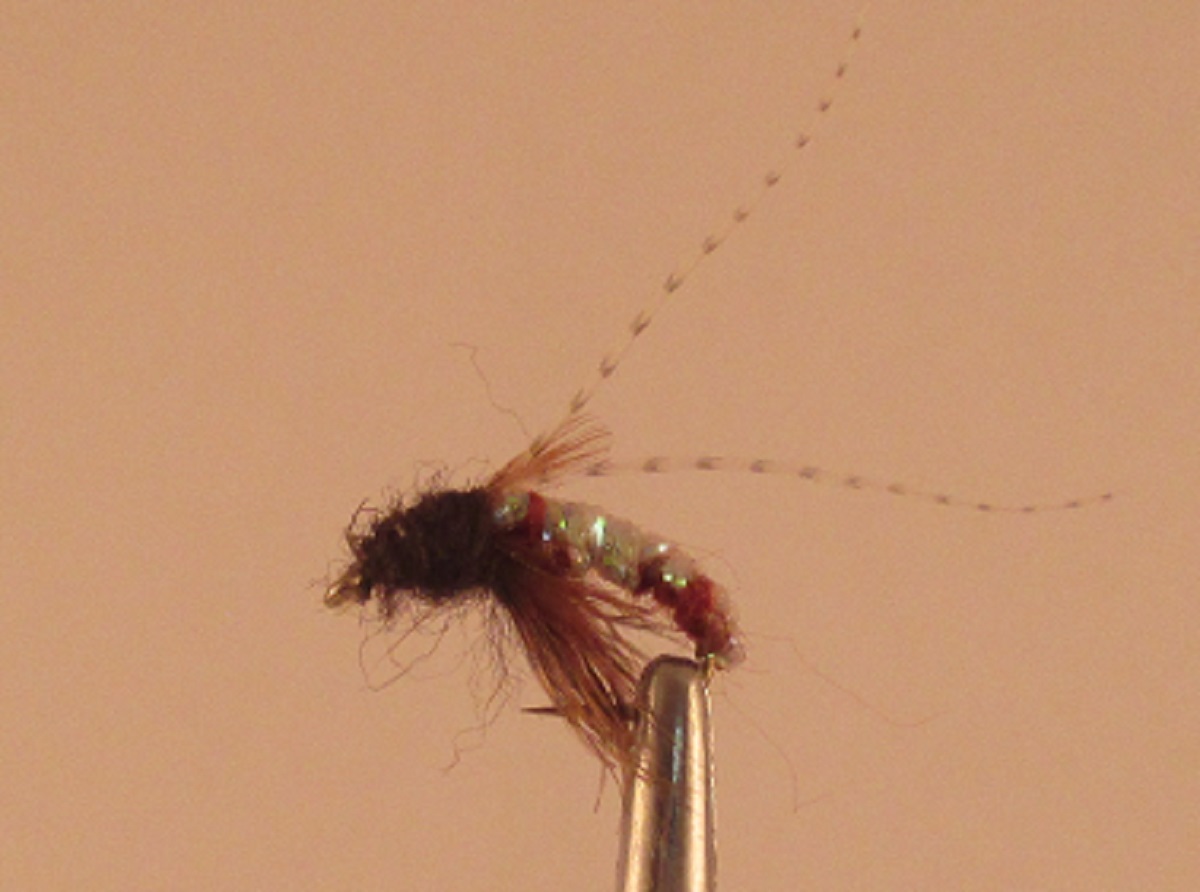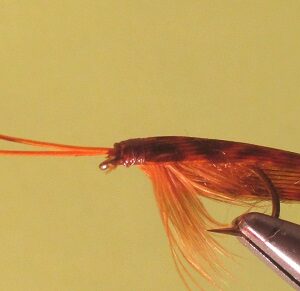Hook Size: 10
These caddisflies build large cases out of sticks. The are in the Limnephillidae family of
caddisflies and the Pycnopsyche genus. There are three species that are almost
identical. We have found little evidence that the trout eat these larva case and all. In fact
it is thought that is why they build them out of sticks – to keep the trout from eating them.
These caddisflies live in fast moving, clear mountain water usually where there are a lot
of woods. They can hatch from the first of September up North, to the end of October in
the South. These are also called Fall Caddis and October Caddis.
Pupa:
These caddisflies, or sedges if you prefer, often crawl out of the water on the banks and
rocks to shed their larva shuck and emerge into an adult. We don’t think trout eat them
after them become adults until the females lay their eggs. For that reason, we think the
Pupa stage of the hatch is the most important stage to imitate.
Presentation:
These caddisflies hatch during the night but can start in the late afternoons and still be
hatching at daylight. We suggest that you fish the “Perfect Fly” Pupa imitation late in the
day. On cloudy, rainy days, start fishing the pupa fly earlier in the day.
Cast the fly down and across near the ends of runs and riffles, mend the line to get it
down, and allow it to swing around directly downstream. Hold the tip of the rod up high
and let the fly rise back to the surface in the current. Most takes occur at this point.

